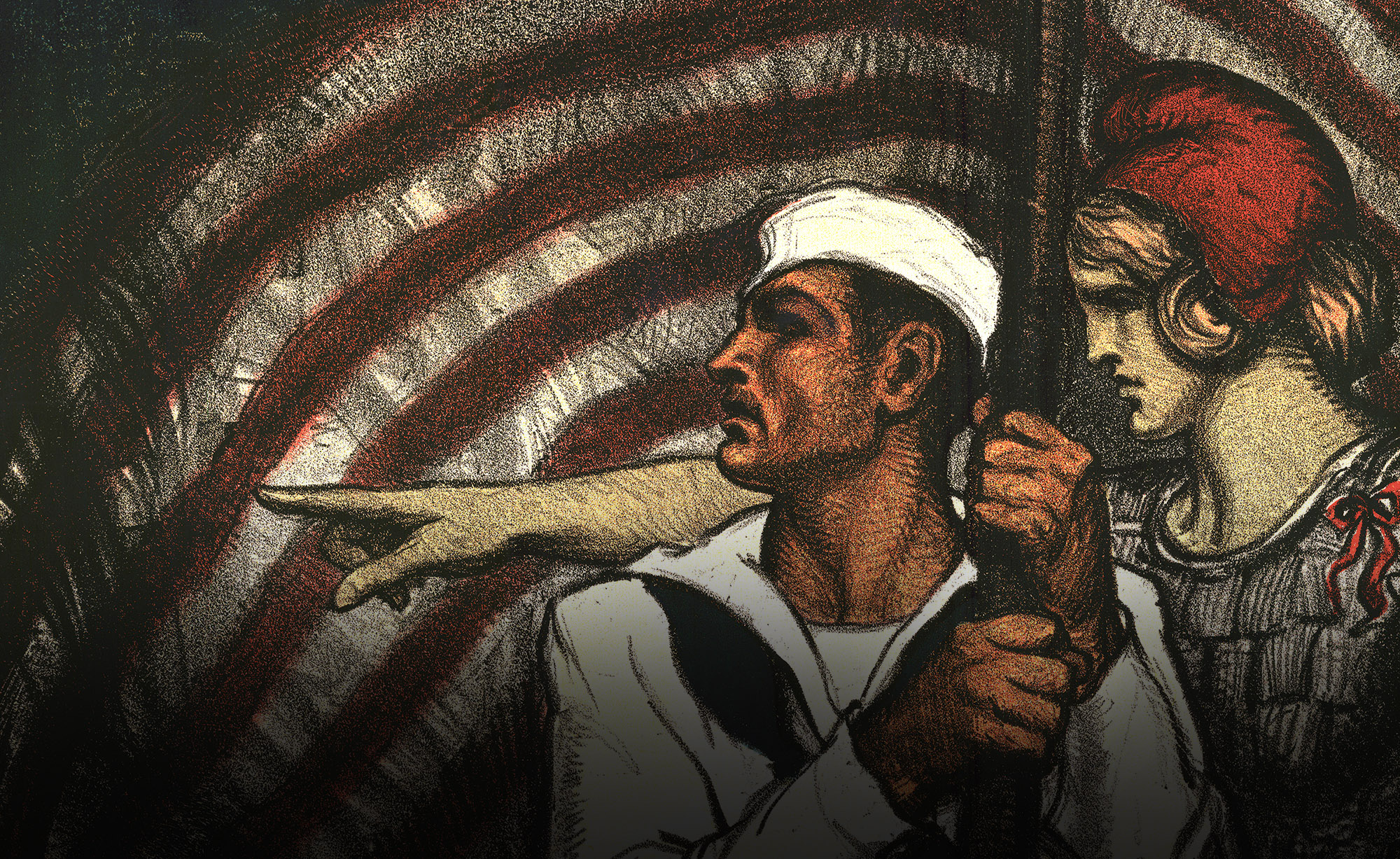| u0003_0004200_0000026 |
| Title | Hunger |
| Creator | Henry Raleigh |
| Date | 1918 |
| Format | 21 x 29 in |
| Description | Henry Raleigh’s “Hunger” is another example of a United States Food Administration poster meant to persuade viewers to change their eating habits; but what distinguishes this image from others is Raleigh’s ability to evoke deep-seated feelings of sadness and sympathy for civilians plagued with starvation due to the war. In the haunting image, an expressionless mother sits cradling a young child, surrounded by older children and ghostly figures in the background. The popular Madonna and child motif is made all the more poignant by the artist’s penciling and shading of black and white which make it seem as if the figures are literally wasting away. The pain of the mother and children is communicated visually through their downward glances, bent pose, and gaunt features. Whereas many posters draw on an abundance of color to grab attention, what makes Raleigh’s image so impactful is the general lack of color, a commentary on the ability of starvation to rob life of vitality. From the destitute image, the eye is drawn to the text “HUNGER” followed by the vibrant red text, “For three years America has fought starvation in Belgium.” The final exhortation, “Will you Eat less- wheat-meat- fats and sugar- that we may still send food in ship loads?” presents the viewer with a moral challenge to save these women and children by eating differently. Convincing people to sacrifice for strangers is difficult, and the success of Raleigh’s poster hinges on establishing an emotional connection between people based on common humanity. |
| Copyright and Terms | Images are in the public domain or protected under U.S. copyright law (Title 17, U.S. Code), and both types may be used for research and private study. For publication, commercial use, or reproduction, in print or digital format, of all images and/or the accompanying data, users are required to secure prior written permission from the copyright holder and from archives@ua.edu. When permission is granted, please credit the images as Courtesy of The University of Alabama Libraries Special Collections. |

